Planting, growing and caring for hazel in the Urals
When growing hazel in the Urals, there are no problems with fruiting. There are varieties suitable for harsh climates. Knowing the peculiarities of the development of culture and weather, they do not allow freezing of flower buds. Beekeepers plant honey plants near apiaries to get an early bribe.
General information about the plant
Hazelnut is a shrub, rarely a tree, with a compact ovoid crown. Shoots are covered with gray, gray-brown bark (6-15 trunks). Leaves are sinewy, rounded-pointed, 6-12 cm in size. The lower part of the plates has pubescence. The type of roots is fibrous, superficial.
Hazel is a dioecious plant. Male and female inflorescences are formed on it. The first ones look like a long earring (10 cm), the second ones look like a kidney, located at the ends of annual shoots. Flowers bloom early. Already in April, the earrings begin to dust.
Pollination occurs under favorable weather conditions. Formed nuts are spherical or oval in brown or dark chocolate color. In the Urals, the hazel bush grows and bears fruit for about 70 years. It reaches a height of 3-4 m.
For better pollination in the garden, it is recommended to plant several varieties (4-6). Hazel varieties in which male catkins bloom for a long time are considered good pollinators. A seedling grown from a seed enters the fruiting season in the 6-8th year, those obtained by vegetative propagation give the first harvest in the 3-4th year.

Suitable varieties for the Urals
Hazel is a cold-resistant crop, but southern varieties will not bear fruit in the Urals. Due to the short summer, only early-maturing, frost-resistant varieties are grown there:
- Tambov early;
- Smolin;
- Moscow ruby;
- Ekaterina;
- Tambov late;
- Sugar;
- Memory of Yablokov;
- Pushkin;
- Ivanteevsky red.
Features of growing hazel in this region
It is difficult to achieve annual fruiting of common hazel in the Urals. It depends on the weather conditions. Recurrent frosts threaten flower buds. Male inflorescences freeze slightly in winters with little snow.
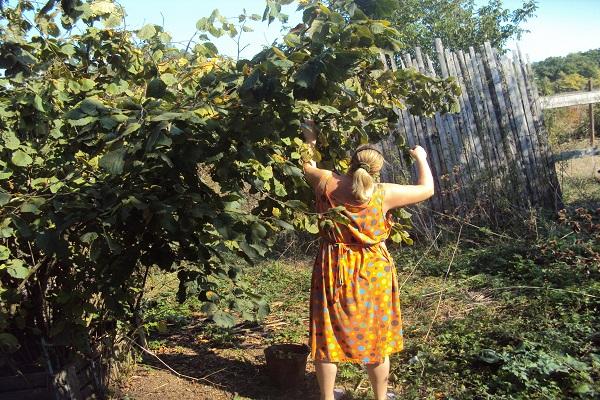
Site selection
Hazel, planted in a draft, will not bear fruit. The landing site is chosen taking into account the wind rose. The seedling must be protected from north and northwest winds. In the shade of trees, buildings, it grows poorly and does not bear fruit, tolerates light partial shade.
Hazel does not like swampy and dry soil... It grows poorly if the groundwater is high. Varietal varieties develop better on humus-calcareous soils. In the conditions of the Urals, it is recommended to grow hazel on the eastern and northeastern slopes.
Boarding time
In the Urals, hazel seedlings are planted in the spring before the buds open. In the fall, the site is prepared for planting. They dig planting holes. As soon as the ground thaws, seedlings are planted. After the snow melts, the soil contains a lot of moisture, which contributes to rooting.

Landing scheme
The crown of the shrub is compact, but in an adult plant it occupies a large area. This is taken into account when landing. Landing holes are dug according to the schemes:
- 6 x 6 m;
- 6 x 5 m;
- 6 x 4 m;
- 5 x 4 m.
With a denser planting, the feeding area and the level of illumination are insufficient for the normal development and fruiting of hazel.
Soil preparation
When choosing a planting site in the garden, the culture of the predecessor does not play a role. Terraces are formed on slopes with an angle of inclination of more than 10 °. Pits measuring 1 x 1.5 m are dug on them.On flat areas - 0.5 x 0.5 m.
Lime (500 g / m²) is added to acidic soil in autumn. For better aeration, humus and sand are added. It is recommended to add soil taken from under wild hazel bushes to the planting pits. It is inhabited by a symbiont mushroom. It protects the bush from diseases, promotes the rapid absorption of nutrients.
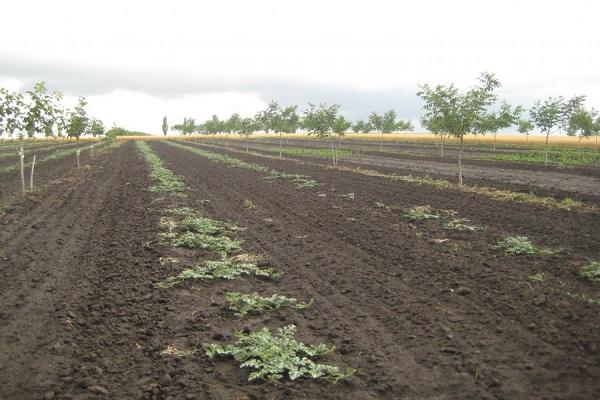
Planting process
Seedlings in containers take root without problems. They are more expensive. When buying hazel with an open root system, its quality is checked. Pay attention to the condition of the roots. They should be fresh, undamaged, fibrous. For planting, seedlings with a height of 1-1.5 m are suitable.
Before planting, hazel is placed in water for 2-3 hours. To fill the pit, a fertile substrate is prepared:
- garden soil taken from the top layer;
- superphosphate - 150 g;
- humus (compost) - 2-3 buckets;
- potassium salt - 50 g.
The mixture is poured in the form of a slide into the center of the planting pit. A hazel seedling is placed on it, the roots are covered with earth. The root collar is not buried. Shoots are shortened by 5-6 buds. 3-4 buckets of water are poured into the hole. The soil is mulched with humus.
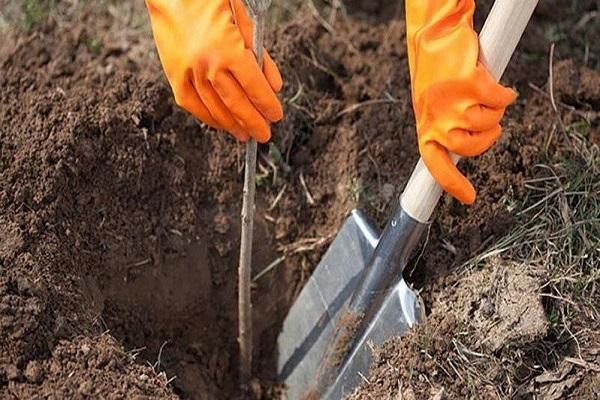
Care Tips
It's easy to grow hazel, the care is standard. In the Urals, difficulties arise because of the weather. In winter, male catkins often freeze slightly, this affects pollination and productivity. Gardeners have learned to resist the elements, bend hazel for the winter.
Watering rules
Regular watering affects the quality of the nuts. With a lack of moisture, the yield decreases by 1.5-2 times. Not all nuts form kernels. During the summer, watering is carried out according to the weather. 4-5 buckets are poured onto the bush. Mandatory watering scheme:
- after flowering (end of April);
- May - 1 time;
- June - 1 time;
- July - 2 times;
- water-charging (late autumn).
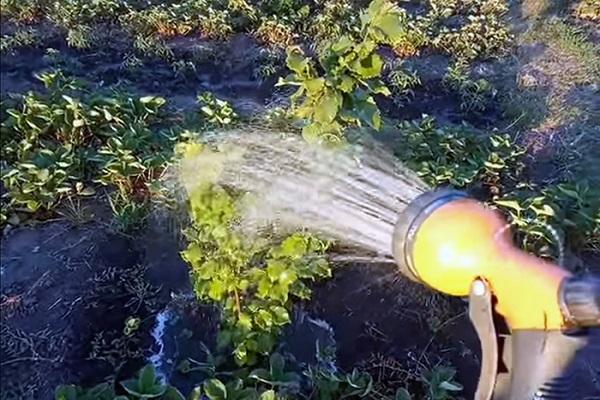
Fertilization
Fertilizers applied during planting have a prolonged effect. Mineral nutrition is enough for the first 2 years. Starting from the 3rd year, hazel is fed:
- in the spring they bring nitroammofosk at the rate;
- after the appearance of the ovaries, they are fed with urea;
- in the fall, humus mixed with ash is poured under the bush.
From May to July, the bushes are sprayed with a urea solution. A 2-week interval is observed between treatments.
Pruning
Up to 5 years of age, they annually engage in sanitary and formative pruning. From the age of 20, the bushes rejuvenate. Frozen and damaged branches are cut out in early spring. To form the correct crown, consisting of 8-10 strong trunks, weak and excess shoots are cut out annually. Bushes with a dense crown do not bear fruit.
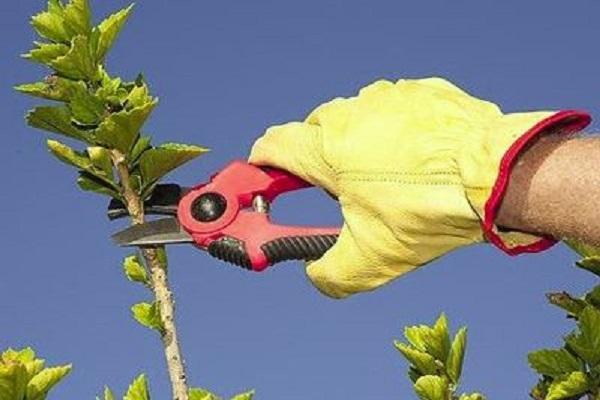
Shelter for the winter
In the Urals, hazel is grown in stanza and semi-shale form. For the winter, the branches are bent to the ground, a load is tied to them, or they are fastened to supports. Young bushes are tied with covering material.
Before the onset of frost, water-charging watering is carried out. They are fed with phosphorus-potassium fertilizers. The soil around the bushes is mulched with humus. In winter they throw snow on the bushes. Earrings do not freeze under the snow.
Diseases and pests
In unfavorable years, hazel suffers from fungal diseases. The bushes are affected by brown spot, powdery mildew. Outbreaks are provoked by prolonged rains, sharp fluctuations in daily temperatures, and a thickened crown. For prophylaxis, in spring and autumn, hazel is sprayed with a solution of colloidal sulfur, copper sulfate. Effective drugs:

- "Speed";
- "Tiovit Jet";
- "Raek".
In winter, the bushes covered with snow suffer from mice. Pests gnaw trunks and shoots. Gardeners lay a poisoned bait under each bush. In spring and summer, sucking insects parasitize on the leaves:
- aphid colonies;
- gall midge;
- scabbards;
- nut weevil and barbel.
The bushes are treated with Kemifos and Fufanon before the leaves appear. In the summer, insecticides are used:
- Inta-Vir;
- Actellik;
- "Spark".

Reproduction methods
Hazel can be propagated by dividing the bush, layering, root suckers, grafts or seeds. With vegetative methods, all varietal characteristics are preserved. This does not guarantee seed reproduction. Delenki are obtained from an adult bush. It is dug up, the branches are trimmed to a height of 20 cm, divided into parts. A part of the root and a stump are left at each cut.
When propagating by layering, young shoots growing in the middle of the crown are chosen. In the spring they are bent to the ground, pinned, sprinkled with earth. In the fall, roots form in the hairpin area. The baby is separated from the mother plant the next spring, transplanted to a permanent place, and covered in winter.

Root shoots are formed in hazel bushes after 2-3 years of life. For reproduction, offspring of 2 or 3 years old are used. They are separated from the root, transplanted into a school, where they are grown to transplant to a permanent place. When propagating by grafting, variegated hazel is used as a stock.
It is not difficult to grow hazel in the Urals. It is difficult to get her to bear fruit every year. Even experienced gardeners do not always succeed. It is necessary to carry out a set of measures to protect flowering buds from freezing, if necessary, carry out artificial pollination.
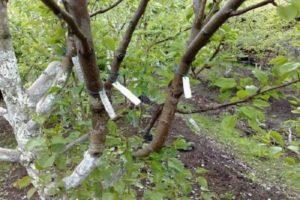

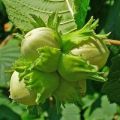
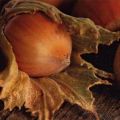

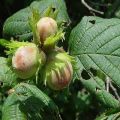


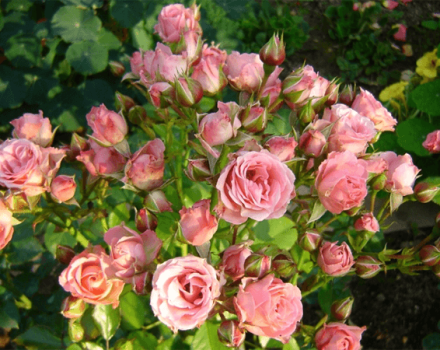

Question: I brought from Krasnodar and planted a nut. now he is a bush already. what to do with it next? to plant the second? take nuts from the store?